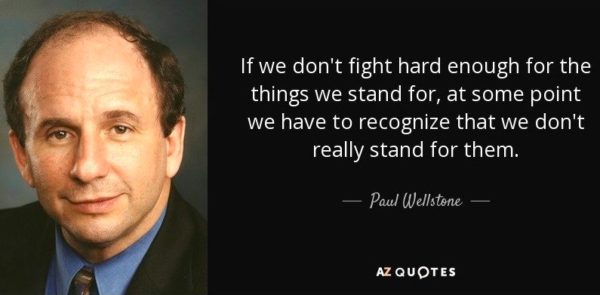There will be several discussions on Sustainable Consumption and Production (CSP) at the Commission on Sustainable Development meetings taking place at the United Nations this week and next week. I will be a panel member at one of those events. One of the issues being addressed is what role the United Nations should play in setting consumption guidelines or for the world.
Consumption Data
Here are some quick data on consumption to put things into perspective. Humans consume 50% more natural resources than we did 30 years ago. People in wealthy countries consume 5 to 10 times more than people in poor countries. 1 billion people live on less than $1 per day. Over 2.5 billion people live on less than $2 per day (the World Bank’s definition of poverty). Over 5.5 billion people live on less than $10 per day. People in India and Africa use on average less than 2 metric tons of carbon emissions per person. In Europe and Japan, the average is less than 10 metric tons. In the United States, the average citizen is responsible for the emission of almost 20 metric tons of carbon each year.
If the rest of the world desired to consume as much as Americans do, the world does not have the resources to accommodate that. The growing ranks of the wealthy in the world often desire to have the same luxuries that we have in the United States. We could attempt to create a sustainable planet by restricting the growth of other countries, but that would mean enslaving billions of people in permanent poverty.
Belonging to Groups
Before we can try to change the style of consumption we have in the developed world, we need to know why we consume the way we do. It comes down to the fact that everybody has a natural inclination to want to belong to a group. This desire might be instinctive or it might be taught. But the need to belong to a group is found in cultures around the globe. It is so strong groups often develop an “us versus them” mindset where he hate those that belong to a group if we sense that the other group threatens the cohesion and basis of our own group identity.
Consumption patterns are ways that we differentiate ourselves from those in other groups. Wealth by itself is one such group. It is the basis for conspicuous consumption. The consumption says to others that I am better because I have more expensive toys. However, a broader, more comprehensive group is one consisting of those who consume not to be better than the others, but simply to be like everybody else. In this group the value and price of the goods we consume are not the source of identity, rather the financial cost simply often happens to be a part of it. This consumption we can see in our children and their desire to have a toy after every other kid in the school has that same toy. They don’t care if the toy is expensive. It is simply a matter of fitting in with the other kids.
Advertisers
Advertisers don’t just sell us things. They sell us the desire to be like everybody else. They make us believe that in order to be like other people like us, we have to have certain products. They sell the family image, the laughing kids, the best friends enjoying each other’s company (the good things in life) and they place these good natured values in to a setting full of consumer goods.
Creating Personal Change
Getting people to decide to change their personal consumption will require people to make deep introspective looks at how they actually gain a sense of self worth from their consumption. I see consumption behavior as being similar to an addiction. We don’t usually think about why we are really consuming what we do. In the end, all behavior is a result of either a conscious or sub-conscious belief that consumption is a way to reduce pain and gain pleasure. However, often our beliefs don’t match the facts of the situation. We are not always happier because of our consumption. In fact, measurements of happiness within cultures are often reduced based on the overall per-capita consumption levels for that culture. In the United States, our culture makes us believe that consumption makes us happy. This belief is part of a shared cultural identity. Even thinking about reduce one’s own consumption below the standards set by our culture creates a fear about not fitting in with our peers. We fear not having a cultural identity. We might think to ourselves, “What will people think of me if I am different from the rest?”
This leads us to the core principle driving our desire to consume as we currently do in the United States and much of the developed world. The fear of alienating the source of our cultural identity keeps from adopting a less consumer based cultural identity that we might actually enjoy more.
When reducing consumption is an inherent part of a rustic vacation retreat or a camping trip, it is then acceptable to live with less. In these settings we actually pay money to trade in our lifestyle for one based on a less consumption. Yet our identity with our home everyday culture makes people afraid to make their vacations permanent. People usually can’t provide a good rational reason why they don’t make their rustic vacation permanent. Yet they envy those that do. When I moved to the Caribbean, I heard people say “I wish I could do that, but I have the car and house payments, so I can’t afford to give up my high paying job.” In other words, fear of alienating the source of our cultural identity keeps us from adopting a less consumer based cultural identity that we might actually enjoy more. These fears are not rational, but they are real and they are deeply engrained in our minds. We need to address this process of changing consumption behavior similar to the way people overcome addictions. It’s by becoming clear about the truth of the consequences both externally and internally.
Approaches for Organizations, Infrastructure and Networks
The international efforts to make global consumption be more fair across populations and to make it sustainable. Some of the discussion about sustainable consumption has been about the reasons for consumption goals to be voluntary. For example people don’t want to be told by others how to live. What if we take reason a step further and design an educational workshop in which people develop their own personal consumption goals. If people have access to the right measurement and analysis tools, they might come up with their own targets that are close to being in-line with what the experts would have assigned to them anyway. There are benefits from setting your own goals. In the legal world, mediation works better than going to court because the parties have ownership in creating the outcome. They are not told what they should do by a judge. Making people come up with their own solution ensures that they understand the reason behind those solutions. As a result, they are more willing to abide by their self-dictated resolution over the long run than they would be if that same resolution was suggested to them by the judge.
We can provide some global resource facts and population and demographic facts as well as some easy to follow methods for analyzing those figures. Then we can let people do their own calculations and make their own conclusion about what those facts mean to them. Let them choose their own reduction schedule if they don’t want to make a drastic change.
I can see this being a process that is presented as an evening church group activity at churches around the world. If certain churches organizations make this workshop available in all their churches around the world, it would give people more connection to its global impact. We just need to develop a training manual for the group leader (someone from within their group). Again, the less we provide suggested individual consumption levels, the better. Participants will determine what they think a fair amount of consumption is for various types of consumption. The amount they come up with may not be a globally sustainable amount, but in reality, nobody can be sure of the correct amount is exactly. Then the participants can look at a list of impact measurements that have been associated with different activities. The participants look at their life to see how they compare. If they see how much they are over consuming, they may decide to tweak their numbers and lie to themselves to justify their behavior. That’s ok too. It’s simply the process of people starting to look at the numbers that should be our goal. If they are happy with this process, we will keep them coming back. If people are turned off by the process, they may never come back.
Any personal consumption programs should primarily address issues where consumers can simply choose between two similar consumption choices rather than being asked to give-up a lifestyle.
We can choose renewable energy over non-renewable energy. We can choose more water efficient landscaping and still have landscaping. We can choose more energy efficient transportation as long as it is not too inefficient in our use of our time. We can reduce waste as long as businesses provide us with the product options that require less waste.
However, consumers want the right to eat lots of calories and be fat if they feel like it, to have two cars, to not exercise, to work as much or as little as we like.
Therefore, rather than making these lifestyle items themselves be part of the criteria of sustainability, why not simply measure the resources needed to make the high calorie foods and to make and drive those cars. Let the American businesses and non-profit groups that Americans trust be the ones to break the news that that diet choices like eating meet and other health choices are relevant issues in terms of sustainable development. These culturally related consumer topics shouldn’t be part of the “international” discussion because it looks too much like big brother telling us what to do.
Americans don’t want somebody from the UN saying to Americans “You shouldn’t eat so much meat.” Rather, if consumers set their own goals, they would be willing to believe the scientific data that suggest possible target goals for net end consumption levels, but the people choose where they should cut back rather than labeling all unnecessary consumption as bad.
An all or nothing consumption target set by international experts is not the best way to beat an addiction. Perhaps people can choose to reduce just a little the first time around. Then this will create a cultural shift. This will make it easier to create bigger self consumption goals the next time they analyze themselves.
Changing Business in order to Allow us to Make Personal Changes
Businesses can help influence consumer choices not just by making sustainable choices available, but also by making sustainable choices the easier choice to make. Labeling of carbon life cycle footprints on goods is an easy tool. Who wouldn’t purchase the product that used less energy to make, pack, and ship than an equivalent product that has a bigger footprint. I think a great way to advance consumer awareness is to advertise how certain companies are meeting Global Reporting Initiative standards or similar standards and advertise that meeting these standards is a good thing. This is how Home Depot was pressured into not purchasing old growth tropical wood. It’s what made McDonalds stop using Styrofoam packaging. Yes, these companies still feed our consumer appetites in unsustainable ways, but they did make changes that made a difference. Much more can be done.
Organizations that are working on global consumption issues
An initiative being lead by Dr. Mohan Munasinghe is the Millenium Consumption Goals. He is trying to target global consumption of the wealthiest 20% of the global population. (see www.mohanmunasinghe.com)




